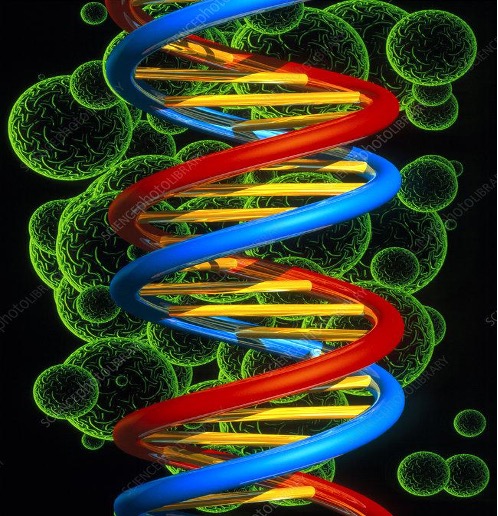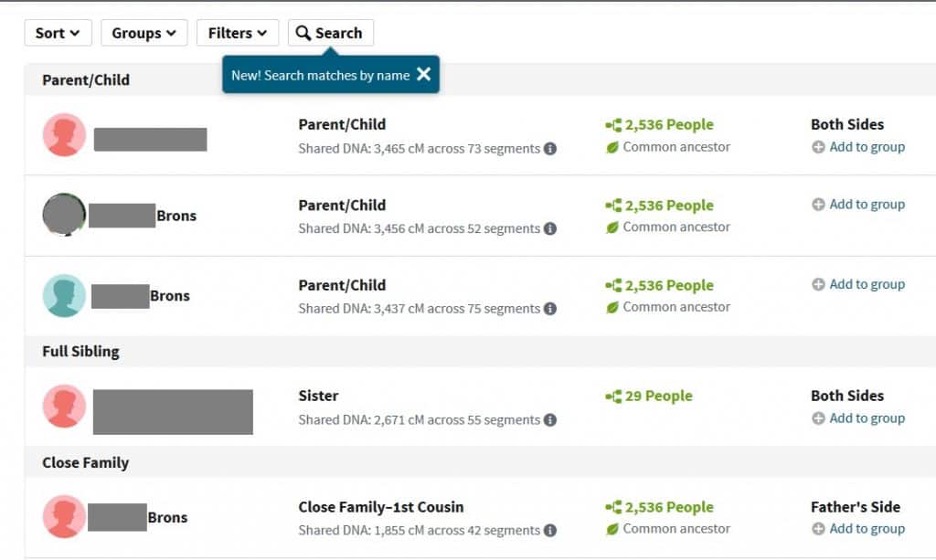Can You Share DNA and Not Be Related?
If you've taken a DNA test and have a lot of potential matches, you may be wondering if you can share DNA and not be related. In this article, we'll explain whether that is possible, what segment size is, how common false matches are, and how to known when a DNA match is actually accurate.
You may have hundreds, even thousands of DNA matches on AncestryDNA and 23andMe. But are they all really related to you? Some of the matches are high and quite obviously there is some kind of connection. There are, however, also some really low matches on these sites.
AncestryDNA is Our Top Recommendation
After reviewing all of the top DNA products on the market, nothing comes close to AncestryDNA to help you discover your whole family story!
They give you so much more than any other family tree DNA kit, and let you connect to the places you're from in the world where your family story started, and even help you to discover living relatives you never knew you had!
For the most accurate family history research based on your DNA, sign up for AncestryDNA now!
Get AncestryDNA →It’s important to note that we can be related to someone and have no DNA segments in common whatsoever. Third cousins and beyond can sometimes not share any of your DNA but they are still descended from the same common ancestor.
Obviously then if you share any DNA with a match you must be related, right? Well, let's hold on a second. The answer may surprise you.
Does Segment Size Matter?
As mentioned, the higher your DNA match in centimorgans, the more closely you are related to someone else. Out of the roughly 6800 centimorgans (cM) each person possesses, the more you share in common the better in terms of an accurate match.
Parent/child relationships range roughly between 3330 – 3720 cM. This is a close connection whereby the individuals share almost half the same DNA. The further you get away from this relationship, though, the less you share with family members.
If you find yourself looking at a DNA match of 6 – 12 centimorgans, this is exceptionally low. When the common DNA segment you share is as short as this it is assessed that there is about a 5% chance that you are related with a common ancestor 6 – 8 generations back.
It is often tricky to trace your family back as far as six or eight generations making it difficult to prove conclusively if this small DNA match is correct. Such small amounts of shared DNA are either false positives or simply unprovable given normal genealogical research.

When Do Matches Start to Become More Accurate?
It doesn’t take much to increase the likelihood of an accurate DNA match. Once you get above 30 cM in shared DNA segments there is a 90% chance that you are related with a common ancestor within 6 – 8 generations.
Obviously, the larger the DNA match the more likely it is to be accurate in general and also in terms of a predicted relationship.
Can You Share DNA and Not Be Related?
The answer to this question is a resounding yes, you can indeed share segments of DNA but not actually be related. It is entirely possible to share small sections of DNA with someone else by coincidence rather than an actual blood relationship.
Instead of inheriting this matching DNA from a shared ancestor, we instead just randomly acquired identical DNA. The term for this is Identical by Chance (IBC). What has essentially occurred is that rather than inheriting a complete strand from a distant common ancestor, random recombination has created an identical strand in your DNA from your parents.
Inherited DNA will have come to you from just one of your parents and if this is the case then a match with someone who also received that DNA from a single parent is valid. But if the strand of DNA is a randomly combined anomaly that both parents contributed to then there are no direct ancestors involved.
How Common Is a False DNA Match?
As already mentioned, the people near the top of the match list with the highest amount of shared centimorgans are unquestionably related to us through blood in some way. Even with a certain level of potential inaccuracy in the tests, they are definitely blood relatives.
When we get down to matches of 20 – 30 centimorgans and lower we do need to start taking a closer look and not just assuming they are accurate matches. Above these amounts, the connection may be distant but is likely still there.
The testing companies can be somewhat varied in how low they acknowledge a match. AncestryDNA for example only shows potential matches over 8 cM, having increased that from their previous 6 cM threshold.
When AncestryDNA took that step many test-takers lost a lot of potential DNA matches and it caused some level of uproar. What customers did not entirely realize is that these low threshold matches were likely to be mostly coincidental matches or if they were accurate they would likely be untraceable.

How Can I Know Whether a Match Is Accurate?
When we come to low matches of under about 20 cM, we really need to be able to prove them in one way or another. The DNA match at these levels can definitely be coincidental so it’s time to start looking toward good old fashioned genealogy and detective work.
A very decisive way to determine if a small shared segment of DNA is an indication of a match is to have both your parents test. If the person does not match either of your parents then the segment of DNA was not passed down by one of them. It is likely created from a combination of their DNA in you and does not connect you to this distant match.
Check for any shared matches located in your closer family if it is not possible to test your parents. Siblings, cousins, aunts and uncles may all share this same segment of DNA and if they do then you have a definite match.
If your small match has a linked tree that you can view, you can look to try and locate a common ancestor or some commonality in the regions where your mutual ancestors lived. You should look out for common surnames in their tree as well.
Conclusion
When we get into the realm of our distant cousins DNA can be a somewhat hit and miss affair. As mentioned, we might share no DNA at all with cousins at the third level and beyond. The further separated we are by generations the less DNA we are likely to share.
The random nature of DNA combinations can cause segments in our DNA that are identical to those found in other people. They may have inherited that segment entirely from one of their parents whereas we received it as a combined segment from both our parents.
A small DNA match can sometimes be false and we can also share no DNA with people to whom we are actually related. This is why we must always be sure to also back up our distant DNA matches with good old fashioned genealogy.
Link To or Reference This Page
We spent a lot of time downloading, cleaning, merging, and formatting the data that is shown on the site.
If you found the data or information on this page useful in your research, please use the tool below to properly cite or reference Name Census as the source. We appreciate your support!
-
<a href="https://namecensus.com/blog/can-you-share-dna-and-not-be-related/">Can You Share DNA and Not Be Related?</a>
-
"Can You Share DNA and Not Be Related?". NameCensus.com. Accessed on May 4, 2024. https://namecensus.com/blog/can-you-share-dna-and-not-be-related/.
-
"Can You Share DNA and Not Be Related?". NameCensus.com, https://namecensus.com/blog/can-you-share-dna-and-not-be-related/. Accessed 4 May, 2024
-
Can You Share DNA and Not Be Related?. NameCensus.com. Retrieved from https://namecensus.com/blog/can-you-share-dna-and-not-be-related/.
